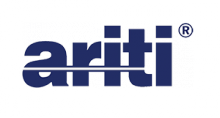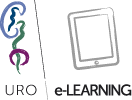- Why a Lifelong Learning Program?
- The Challenge of E-Learning
- E-Learning in Medicine
- Best Practices
- Problem-Based Learning (PBL)
- Our ultimate Educational Goal
ACTIVE LEARNING is defined as any strategy that involves “students in doing things and thinking about the things they are doing" and includes small group activities, collaborative learning, cooperative learning, and problem-based learning, to name just a few ideas Bonwell, C, & Eison, J, 1991
Why a Lifelong Learning Program?
In its early beginning, Medicine was purely empirical and experimental. Diagnoses were based only on the physician's ability to locate and interpret the symptoms of an illness correctly. In this process, physicians used their clinical skills and experience.
In modern Medicine, every step and every decision is based on documented knowledge, clearly encoded and presented in guidelines. Nevertheless, experience and skills are still important, as they will dictate the diagnostic and therapeutic approach for the specific patient. It is clear that evidence-based medicine depends on physicians as an excellent tool in their hands; however, the tool needs to be adapted to the needs of each patient– who is unique, has specific characteristics, both as regards the disease and their personality and expectations - so that the outcome may be the best possible one for the specific patient.
Patient-focused medicine has once again placed physicians under the spotlight, after 20 years during which their role was limited to that of an administrator of science, i.e., executing guidelines and applying evidence-based medicine.
Continuing medical training is tried today, as for years it has tried to spread Medicine based on documentation, creating the vast gap of individualized knowledge. Furthermore, current financial conditions limit physicians' training possibilities, as training costs are double: both the transportation/participation cost as well as the loss of income due to lost work hours.
The Challenge of E-Learning
Presently, access to information is achieved through electronic learning resources. The Internet is the most useful instant access tool, for both physicians and patients. Especially for healthcare professionals, electronic training (e-learning) offers both unlimited material as well as an opportunity for alternative teaching methods, which are more effective (problem-based learning) and provide the possibility of a custom-made learning course, to meet the needs of a specific physician, without wasting time or resources.
E-Learning in Medicine
Dissemination of technology, and the Internet, in particular, combined with globalization in the labour market, the circulation of ideas and the dependence of society on “knowledge workers”, have been creating new demands and prospects in the field of education. “Knowledge workers’” demands for continuous training, innovation, access to new learning resources, as well as the value each person places on their personal time and mobility, are shaping a new context, which, in its turn, has an impact on educational and training requirements.
Universities, as traditional training institutes, had to struggle against the old firmly fixed philosophies on their operation and finally recognise that “online” education did not pose a threat to this conventionally academic profession, nor a simple but miraculous translation of notes/lectures into the language of computers. Corresponding educational institutes – ISUD being one of them – realized the need to re-design all their administrative, technical and educational procedures so as to adapt to the new paradigm of successfully and efficiently using the Internet for educational purposes.
Research on training and learning has repeatedly shown that the availability of high-quality content, the use of high-tech equipment and interactive real-time systems are crucial to the success of an e-learning course. However, what remains to be defined, is what this entails for trainers/tutors, the motivation for trainees’ participation and the effective mobilisation of participants' teamwork. In other words, a platform for “learning discourse” is the best model for e-learning. Lastly, the parameterization of content and the teaching method to suit a local level, as well as the prospect of custom-made courses in response to a trainee’s learning style and needs is of the essence. What is a negative aspect is that, while designing an electronic course allows access to more students, the time and work required for managing it is significantly more demanding than in conventional teaching.
Furthermore, creating cognitive subjects to be used in e-learning has already been launched, applying a participatory process of subject matter experts, who are often members of a community of practice. In order to meet this need, ISUD has mobilised Urologists, on the basis of their Urology sub-specialties.
Therefore, the basic advantages of teaching via the Internet are the following:
- Flexibility in time and place
- Potential access to a broader audience
- Faster material development as compared to videos and CD-ROMs
- Easy content updating and storage
- Lower costs as compared to conferences
- Higher interaction potential between trainees and trainers/tutors.
- Securing a higher level of equality, due to the prospect offered to more reluctant learners to present their views using their computers.
Best Practices
E-learning course designers consider certain basic principles, i.e. best e-learning practices, with the aim of:
- creating a feeling of personal attention for each trainee/learner through continuous contact with trainers/tutors.
- encouraging trainees to communicate with tutors in order to resolve any issue that might occur.
- providing continuous interactive support that keeps up with any potential problems.
- monitoring trainees’ progress on a daily basis.
- offering immediate answers to trainees’ questions.
The focal point of every practice should be to establish an environment to ensure learners’ socialization. Knowledge is a social phenomenon. We learn through experience, practical application and dialogue. Therefore, a well designed e-learning course needs to enrich the social aspects of a virtual classroom, supporting a dense range of communication which will include participation in fora and chat sessions, creation of ad hoc interactive communities and easy access to other knowledge communities, such as fora, electronic libraries, alumni communities, etc. In order to achieve this goal, ISUD has is creating a social networking tool for Greek Urologists with a dual purpose: a) academic/educational, and b) professional/social. For us, at ISUD, this venture is a major investment of resources and labour, but it is believed to be the most effective way to support Greek Urologists, Medical students, as well as all other healthcare professionals interested in Urological diseases.
Problem-based Learning
PBL (Problem-based Learning) is used in dozens of Medical Schools in the USA, Canada, and Europe as well as around the world. It is a teaching model was first applied experimentally approximately 35 years ago in McMaster University in Canada, and has been gaining ground when compared to conventional Medicine teaching.
In PBL everything starts with the problem. This is usually a hypothetical scenario of some clinical case, which includes the data from lab tests, the outcome of an operation, or even a scientific article, a photograph or a video. Physicians deal with every problem either in small groups (6-10 people) or on line. The philosophy behind PBL is that one learns something better when seeking a way to resolve an issue and relate to it, rather than by linearly presenting unconnected and often redundant information. Furthermore, the system is based on premise that knowledge is better consolidated when a physician has actively searched for it and assimilated it, rather than as a passive recipient of content, as is the case in lectures. As mentioned by those who inspired PBL, by applying this method “a user learns how to learn”. A significant feature of PBL is to learn with minimal effort. This should not be seen as something negative, since continuously updating medical knowledge requires that emphasis not be placed on details; instead, learning focuses on searching for medical information, on recognising what is important and what insignificant - whether it concerns one’s bedside manner or behaviour towards other healthcare professionals - and on managing simple daily clinical problems. The PBL teaching model, which was presented in summary, in combination with many other changes that accompany it, at whatever level it may be applied, is definitely more suitable when trying to achieve these goals than conventional teaching in a traditional educational/training course.
The first thing necessary for PBL to work is to have the scenarios. These must be very carefully prepared, in order to cover several cognitive subjects and study goals. Tutors need to cooperate to create the scenarios, to prepare the support material and to organise the overall venture. Naturally, these trainers/tutors need to be specifically trained, to operate in a group and to provide sound guidance. When using the scenarios in real time, groups must be small (up to 15 people), because bigger groups make the work necessary harder. Another essential aspect is infrastructure. Small rooms with the appropriate audiovisual equipment, organized libraries and computer working stations with Internet access are necessary. Finally, PBL cannot be successful without evaluation at every level using a mechanism that will reach conclusions from said evaluations (direct electronic voting is ideal). Consequently, the seemingly simple concept of problem-based learning entails several chain-reaction changes and innovative ideas, such as Trainers’ training, Student-centered learning, Teaching in small groups, Interconnected lessons, as well as a specialized Education Support and Design Office. ISUD, in cooperation with the Medical IT Laboratory at A.U.Th., has already undertaken the first action/application during the 5th Interactive School in Portaria, in April 2012.
Our ultimate Educational Goal
Our ultimate goal is for all ISUD actions to move in the same direction so as to contribute towards having competent Urologists in Greece, who continuously acquire new knowledge, skills and behaviour patterns that correspond to current reality; such skills and competencies, of course, should be sufficient in quantity, excellent in quality, and acquired expending minimal effort, in the shortest time possible.
ISUD/USUD has already had 15 years of experience in training Urologists; It is the only real organization that has been systematically active in the field of Urology training. Its course is characterized by continuous and successful efforts in recognising the constantly changing needs of Greek Urologists and shaping educational/training actions featuring:
(a) education and training for small groups of physicians;
(b) modern learning techniques;
(c) designing, applying and evaluating educational actions;
(d) providing continuous education/training credits;
(e) on line educational actions.
"Learning is not a spectator sport. Students do not learn much just sitting in classes, listening to teachers, memorizing prepackaged assignments, and spitting out answers. They must talk about what they are learning, write reflectively about it, relate it to past experiences, and apply it to their daily lives. They must make what they learn part of themselves."
(Chickering & Gamson, 1987).














